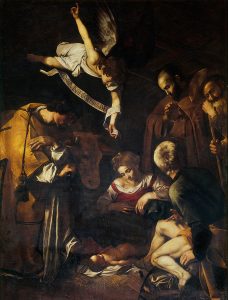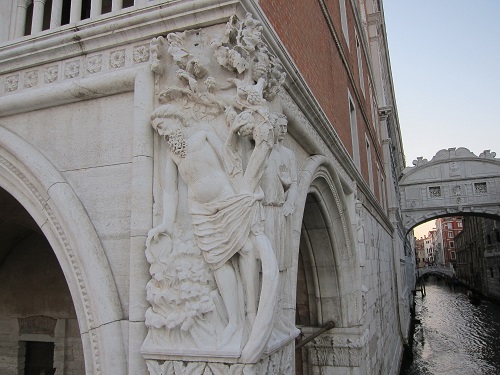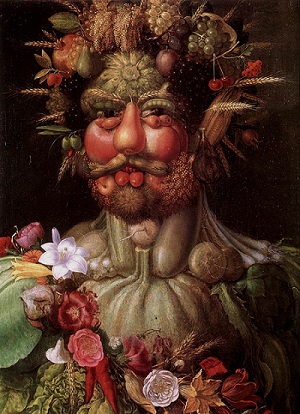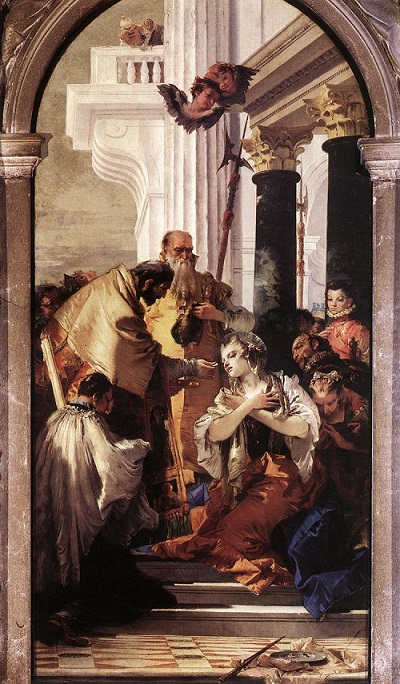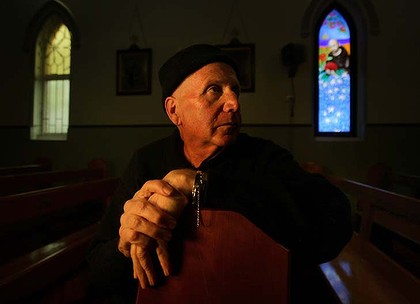One of Venice’s Renaissance masters was Vittore Carpaccio (1465 – 1525/26), an Albanian painter who studied under Bellini. While he is probably best known for his cycle of nine paintings, The Legend of Saint Ursula, he also painted two paintings of St Jerome’s monastery which are well worth viewing and considering. Carpaccio also painted Saint George and Saint Tryphon, and it may have been the case that these collection of paintings were conceived of as a united cycle, although there is no evidence to suggest that this was Carpaccio’s intention. What is clear is that in all of these paintings, the atmosphere is seem to be almost fairytale like, helped in this exercise by the exotic animals associated with each of the Saints – the dragon of St George, the basilisk of St Tryphon, and the lion of St Jerome. If this was a united cycle of paintings, then the question arises as to how St Jerome fitted into it, for in the case of both St George and St Tryphon, they both rescue a princess and stabilise the reign of the princess’s father by controlling an inhuman power which takes an animal form, but this is not the case with St Jerome.
The story of St Jerome and the lion is the central theme of the two paintings, the subject of this piece. St Jerome is said to have taken either a thorn or a stone out of the lion’s paw and in doing so he controls and tames the lion. In the legend around St Jerome, it is said that he took the lion with him into his monastery at Bethlehem where, after initially taking flight out of fear, the monks were able to teach it to do some useful chores, including keeping watch over the ass that carried the monk’s firewood. The story goes on that one day, the lion fell asleep and a merchant caravan riding by seized the ass for its own use. The monks, believing the lion had eaten the ass, made him bear the firewood. Some months later, the lion saw the merchant’s caravan coming back and roared them into submission, shepherding the whole caravan into the grounds of the monastery where the merchant’s begged Jerome’s forgiveness and promised to stop their caravan whenever they passed by, to replenish the oil lamps of the monastery.
In the first painting by Carpaccio of the Bethlehem monastery, you see St Jerome bring the lion into the grounds of the monastery, and the frightened monks almost appear to fly off in fear. Carpaccio gives an insight into their fear by portraying the flying robes, almost as if they are trying to will themselves to flee at a greater speed than they are capable of; flight would have been a better option.
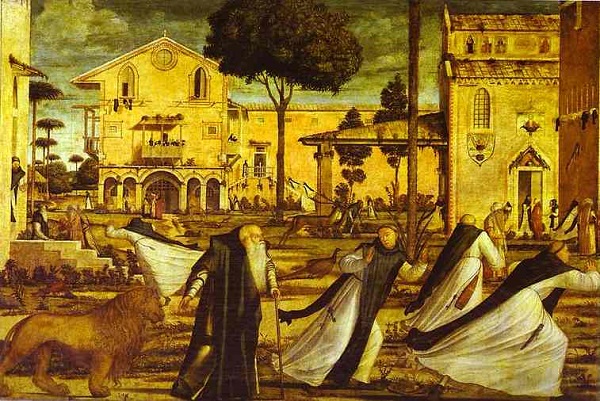
This is a monastery where the monks engage in scholarly translations of the Bible, and you can imagine that they would struggle to find what reason there would be for a lion in this orderly and settled community. The lion however, is found work and becomes very much a part of that community.
In the second painting, we see the deceased St Jerome laid out on the ground, his head pillowed on a stone, clearly the austere burial of a monk. At the right of the painting, the lion is seen roaring as if in sorrow at the death of his beloved St Jerome, which is in contrast to the controlled and unemotional discipline of the monks kneeling around the body. In the left of the painting in the middle ground, you can see that ass which was recovered from the merchants and you can also see a man on horseback, possibly one of the merchants returning to supply the oil lamps, who is reminded of the lion’s roar which forced the caravan into submission in this first instance.
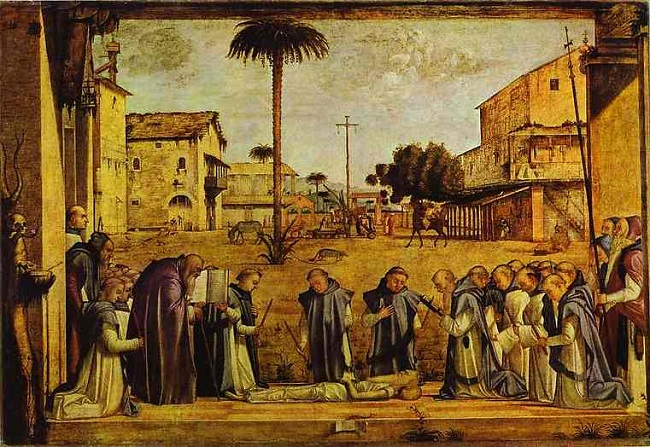
There is also the sense that something has happened to the monastery since the introduction of the lion. If you look at the first painting, there are Venetian frescoes, clear architectural features, all of which give a sense that this monastery was not only peaceful but beautiful. In the second painting, the buildings are devoid of such architectural ornamentation and indeed, the buildings look tired and almost rundown, as if they too, have come to the end of their architectural life, just as St Jerome has come to the end of his life.
I find these paintings fascinating, not only because they encapsulate the story of St Jerome, the lion and his Bethlehem monastery, but because they do look like pictures from a storybook, something you would expect to see in a volume of fairy-tales or legends – the paintings themselves tell the story, as if you don’t need to read the accompanying text. I especially find the use of the lion in the second painting as both poignant and tragic – here is a wild beast capable of expressing the extreme sorrow which the monks themselves seem incapable of expressing and this I find very powerful.
Carpaccio was responsible for some wonderful paintings, and these are by no means his most famous, but I find them beautiful and fascinating. I hope you will too.

